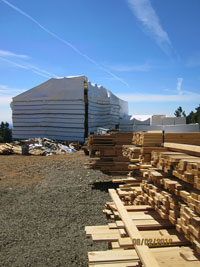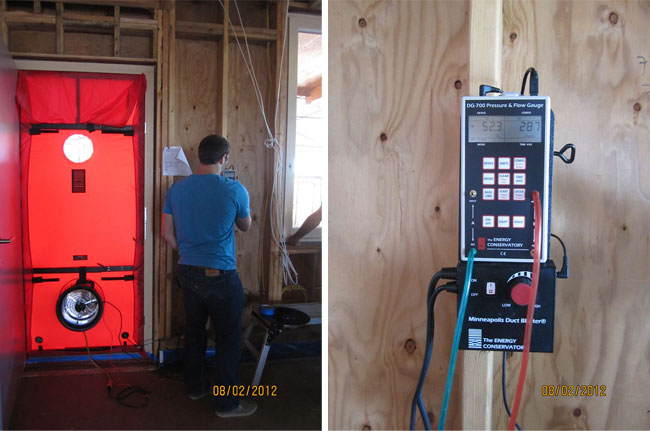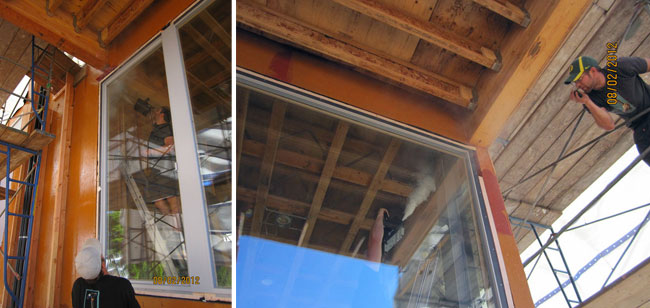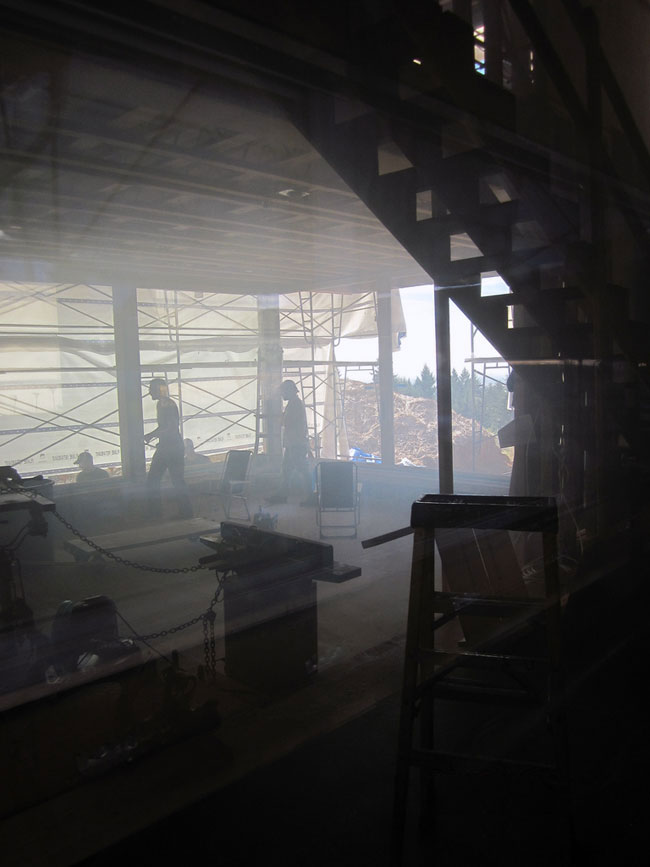Initial blower door test of 0.42ACH50 a great starting point.
 In the 21st century movement of high performance building, airtightness of the building envelope plays a starring role. It’s so critical that airtightness is one of just three performance metrics that determine whether a building is, or is not, a Passive House. (The other two are heating/cooling load and primary energy demand.) Minergie-P, with its Passive House-like emphasis on building energy performance, places equal emphasis on airtightness.
In the 21st century movement of high performance building, airtightness of the building envelope plays a starring role. It’s so critical that airtightness is one of just three performance metrics that determine whether a building is, or is not, a Passive House. (The other two are heating/cooling load and primary energy demand.) Minergie-P, with its Passive House-like emphasis on building energy performance, places equal emphasis on airtightness.
The magic number for both Minergie-P and Passive House is 0.60ACH50, or 0.6 air changes per hour at 50 pascals of pressure, as measured by a blower door test (which simulates a 20mph wind on every surface of the house).
For high performance builders the blower door test can be a nail-biting affair. After weeks and months of care and precision in construction, did all those details work? Were seams tight and gaps filled? When that blower door fan is put into place, windows and doors closed, and the fan starts up… that’s some serious building science drama.
So when Hammer & Hand Certified Passive House Consultant Skylar Swinford conducted the preliminary blower door test at Karuna yesterday with project supervisor Scott Gunter and crew looking on, the 0.42ACH50 reading was cause for celebration. This early reading measured airtightness at the Karuna House at nearly 1/3 better than that required by the world’s most stringent building energy standards.

For the Karuna House, 353cfm50 (353 cubic feet per minute of air flow at 50 pascals) is the target for 0.60ACH50. This reading shows 287cfm50.
Here’s how Scott described it:
“The whole crew could not wait for this blower door test. It’s a huge milestone. Airtightness is the challenge and the numbers reflect all of our attention to the details. As we watched the blower door ramp up and verify just how tight the building was, we couldn’t help to think back 8 months ago when we were setting the foundation geofoam in a gusty open field.”
Moving forward, airtightness at Karuna should only improve. The crew used a fog machine to identify sources of air leakage and will seal those gaps in the coming days.

Skylar and the crew use fog to identify air leaks at Karuna.
“We didn’t expect to reach the target this early on,” said Skylar. “We were just doing the test for fun, to see how far we needed to improve. But we’re well below the air-leakage threshold, which gives the Karuna crew some much deserved breathing room. ”
Much deserved indeed. Kudos to the team!
– Zack
 Back to Field Notes
Back to Field Notes